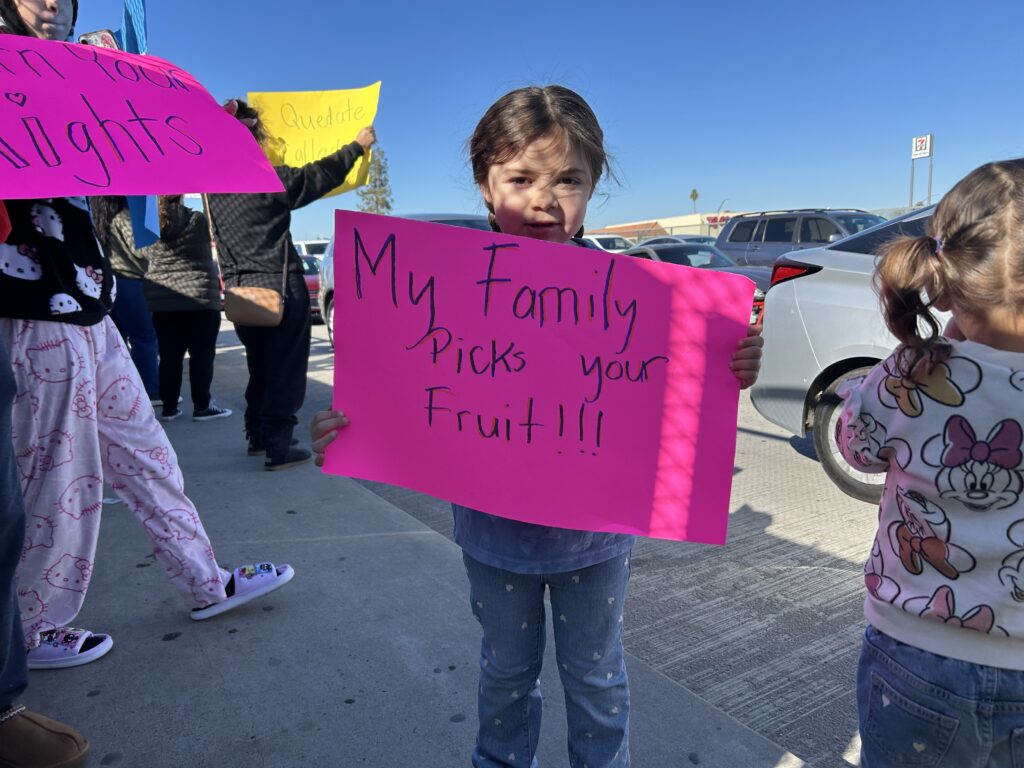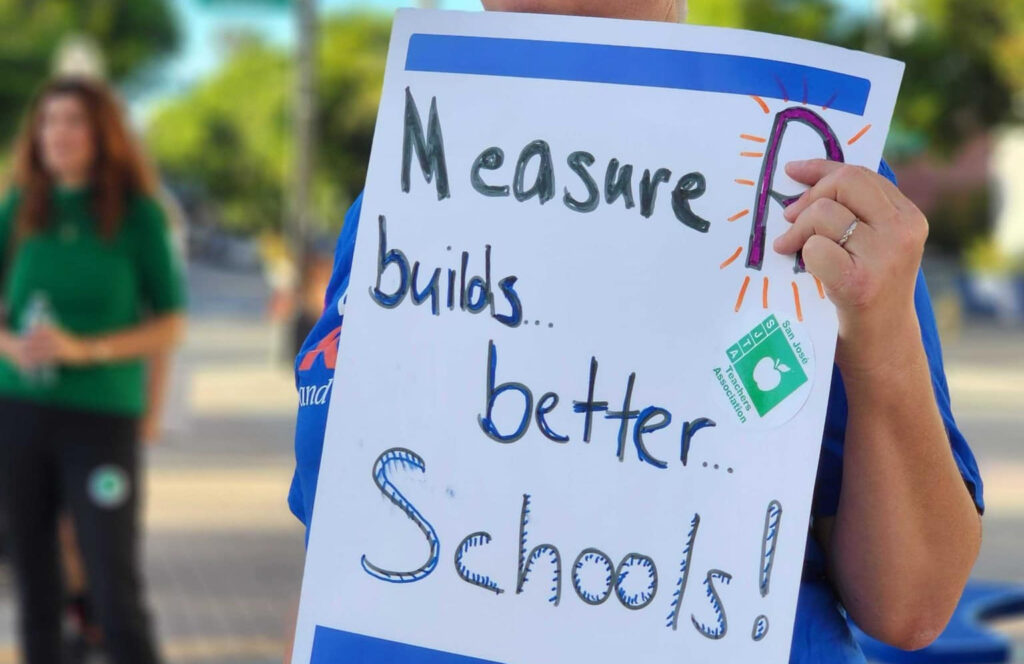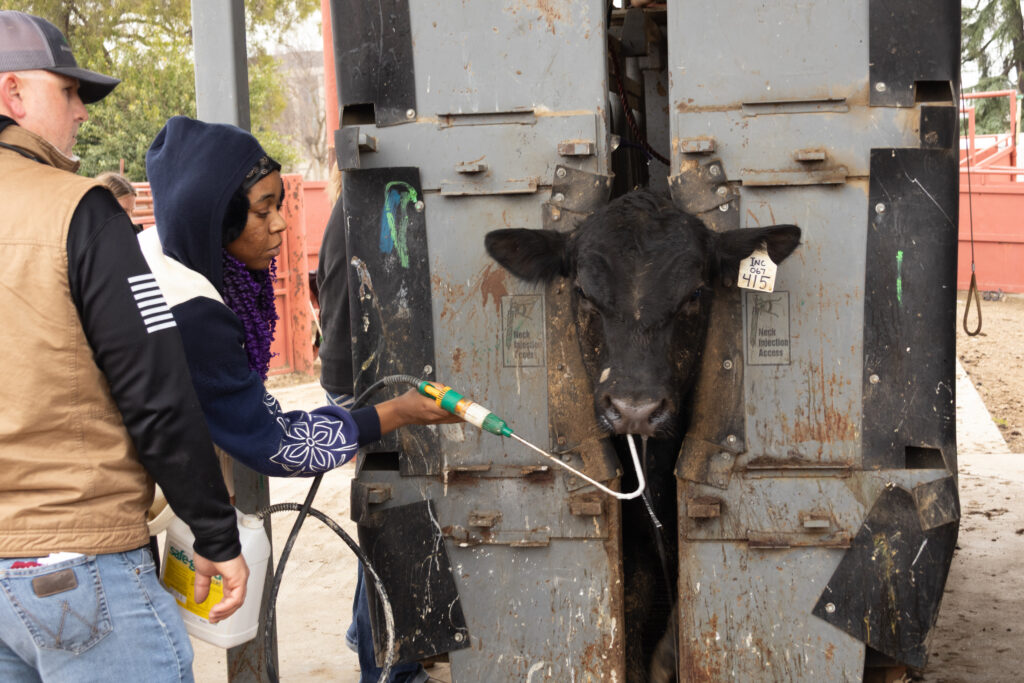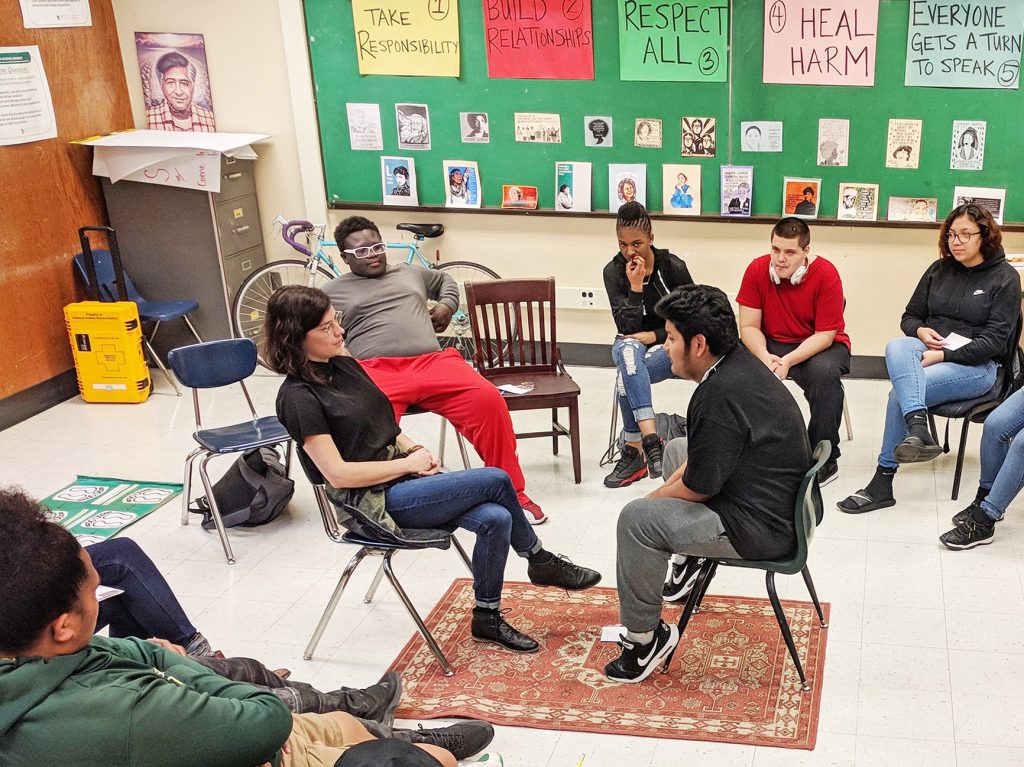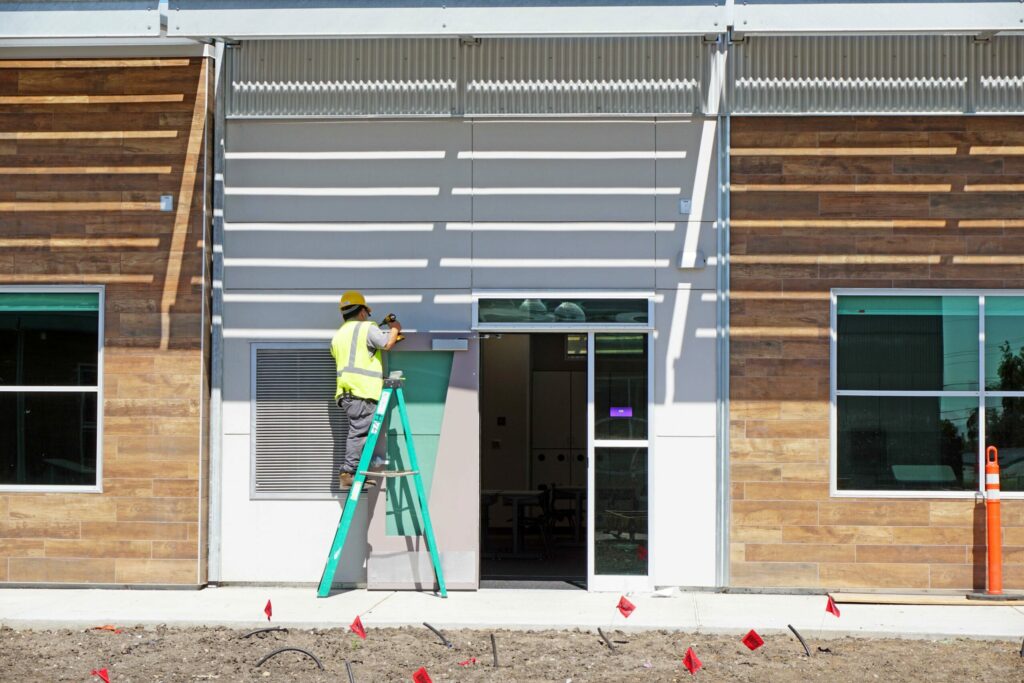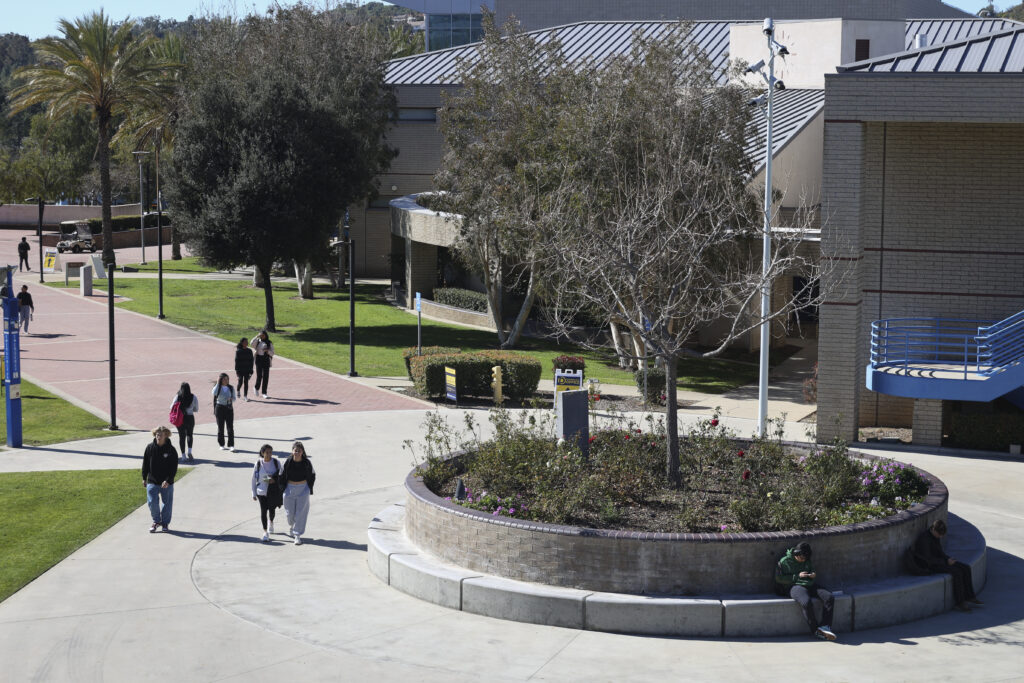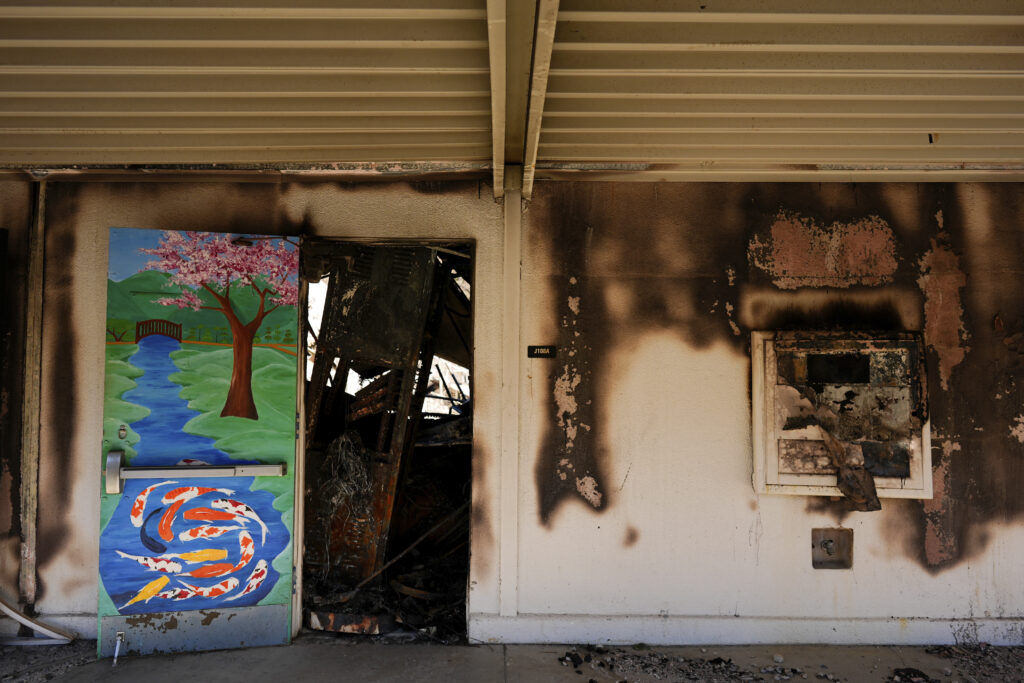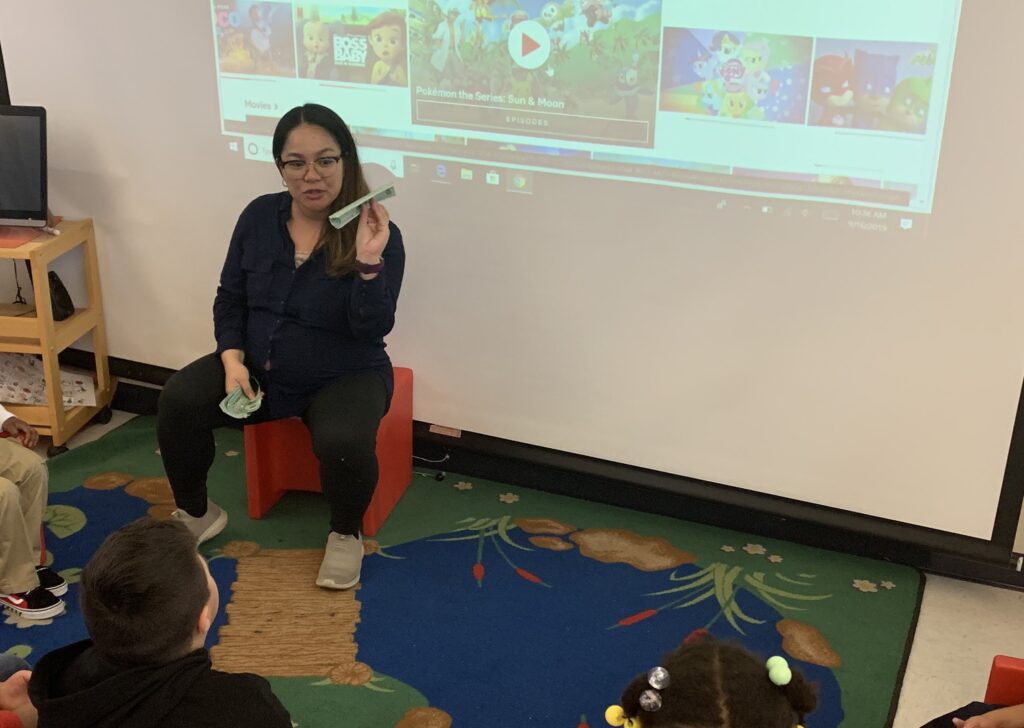
Denny Sicairos, 5, at a Bakersfield protest against an extensive Border Patrol operation held last week.
Emma Gallegos/EdSource
Advocates have called upon school leaders to take action to protect immigrants in the wake of an extensive operation by the U.S. Customs and Border Patrol in Kern County last week.
Immigrant families have been afraid to send their students to school in the wake of the extensive operation, some opting to keep them home.
“Students are scared,” said Belen Carrasco, a middle school teacher at Bakersfield City School District, who reported an increase in student absences in her classroom over the last week. Students have told her that Border Patrol agents knocked on their doors, and in one case, detained a parent. Students are asking Carrasco for information on what they should do if agents approach them.
One resident, Samantha Gil, said that her daughter’s immigrant friends at West High School in Bakersfield are “hidden in their houses. She is very sad for them.”
The fear is so great that community members have been afraid to show up to school sites in rural communities where food is being distributed, according to Ashley De La Rosa, education policy director for the Dolores Huerta Foundation, a Bakersfield-based community advocacy organization.
Advocates are encouraging immigrants to know their legal rights under the U.S. Constitution and to document any encounters with immigration officials. They are encouraging school leaders to get in touch with community groups that can provide this education or pass out cards with information about people’s constitutional rights, as Delano Union School District does. Above all, families are looking for assurance that schools are safe places that will not alert immigration authorities to their immigration status or address.
“The parents are really looking to school districts to take action,” De La Rosa said.
‘There was a lot of terror’
Firsthand accounts show that border patrol agents are broadly targeting immigrant communities, according to Rosa Lopez, an attorney with the American Civil Liberties Union of Kern County. She works with the Rapid Response Network of Kern County — a group that offers a hotline for those who are a target of immigration enforcement or who may witness agents in the community.
“What [agents] have done is terrorize communities and profile people who look brown, who look undocumented and who look like farmworkers,” Lopez said.
The Rapid Response Network has also confirmed the presence of Customs and Border Patrol agents at gas stations and restaurants frequented by farmworkers and immigrants, pulling over farmworkers traveling to work, and even a Home Depot parking lot where day laborers look for work, Lopez said.
A video,shared by local NBC affiliate KGET showed a U.S. Customs and Border Patrol agent detaining a U.S. citizen and threatening to break the windows of his gardening truck, after slashing its tires. He was later released, KGET reported.
Gregory Bovino, chief patrol agent of the El Centro sector in Imperial County on the Mexican border of the U.S. Customs and Border Patrol called this week’s raids Operation Return to Sender. He posted photos on social media, stating that the operation was aimed at protecting communities “from bad people and bad things.” His posts about the operation included hashtags for Bakersfield, as well as Fresno and Sacramento. The agency did not respond to questions from EdSource.
Bakersfield City Councilmember Andrae Gonzales said families he represents in Bakersfield were being “harassed,” “intimidated” and “terrorized” by Border Patrol agents.
“All of last week, I’ve gotten countless calls from people who wondered what to do, what their plan should be; employers who saw their employees staying home; principals and teachers upset and concerned for their students because they all were hiding,” Gonzales said.
There was a lot of chaos, particularly on social media, about where the Border Patrol was operating and whom they were targeting. De La Rosa said there were sightings of agents near schools.
“There was a lot of terror — or just fear — that trickled into kids not going to school,” Lopez said.
News reports, videos and posts on social media about immigration enforcement have caused many local immigrants to question whether it’s safe to send their students to school or even leave their homes at all.
Residents from across Kern County showed up in Bakersfield on Friday to protest the agents’ presence, saying they were there on behalf of terrified families and friends in their community — the undocumented, those in the midst of applying for asylum, green cards or citizenship — who are concerned about federal immigration enforcement.
Vanessa Acevedo, one of those protesters, said her sister-in-law, who is undocumented, is afraid to go to work or leave her house for any reason and has been relying on others to take her children to school.
Many of the areas targeted by Border Patrol agents are frequented by Latin American immigrants, but the video of a citizen being detained sent shock waves into the local Sikh community as well, according to Raji Brar, co-founder of the Bakersfield Sikh Women’s Association.
Many immigrants in the Sikh community have green cards or are going through the asylum process, she said. Seeing an American citizen being detained was “jarring” to them and a shocking “abuse of power,” Brar said.
She said the local gurdwaras, or places of worship, were empty over the weekend. Some parents have told her that they’re not going to work and that they’re keeping their children home out of an abundance of caution.
“It was a wake-up call for all of us who happen to look a little different,” Brar said.
Preparing for the second term of Donald Trump
As state and local school officials prepare for the second term of Donald Trump, who promised unprecedented mass deportations of immigrants, California Attorney General Rob Bonta recently released updated guidance for how K-12 schools and colleges should respond to immigration enforcement agents. Some school districts have reiterated they are “sanctuary schools” — a stance many developed during Trump’s first term — and that they wouldstrictly limit cooperation with federal immigration enforcement.
But the operation conducted by the Border Patrol in Kern County seemed to come ahead of the expected schedule — Trump won’t become president until Jan. 20.
“It’s really challenging, because I think we knew this was a possibility with this new administration,” De La Rosa said. “But (last week’s operation) caught everyone off guard.”
Last week, Bakersfield City School District sent a message to its staff reminding them of guidance from the state attorney general and also a policy its board passed in 2017 called the Safe Haven Resolution, which designates schools as “protected areas” where immigration enforcement should not occur. District spokesperson Tabatha Mills clarified that no agents have visited the district’s schools.
De La Rosa said that Bakersfield City School District is also planning to reach out to parents concerned about immigration enforcement through the district’s community engagement liaisons.
This week, Delano Union School District plans to pass out cards to families, referred to as red cards, that have information about the rights everyone has under the U.S. Constitution, according to Assistant Superintendent April Gregerson.
Delano is a rural community approximately 40 miles north of Bakersfield that is heavily populated by immigrants and farmworkers. The deaths of two residents fleeing Immigration and Customs Enforcement (ICE) agents in 2018, after dropping their daughter off at high school, led to community protests against ICE.
An estimated 1 in 10, or 1 million, children in California have at least one undocumented parent, and approximately 133,000 children in the state’s public schools are undocumented themselves, according to the Migration Policy Institute.
A 2018 publication by the Stanford Institute for Economic Policy Research reported that zealous application of immigration laws causes school enrollment to drop and can set back the education of young people, including many U.S. citizens. The study found that Latino enrollment dropped nearly 10% in communities where local law enforcement collaborated with ICE.
State leadership
The Border Patrol’s actions in Kern County have drawn condemnation from state leaders. The California Latino Legislative Caucus released a statement saying the unannounced raids are “sowing chaos and discord.” The group urged the Border Patrol to announce their raids and to avoid sensitive areas, including schools.
“It is seemingly a rogue group of Border Patrol officers that just decided to take it upon themselves to hang out at where farmworkers hang out, hang out where day laborers hang out and decide to essentially round them up and do exactly what the Trump administration threatened that they were going to do,” said state Sen. Lena Gonzalez D-Long Beach.
Gonzalez and State Superintendent of Public Instruction Tony Thurmond have introduced a bill that aims to establish a 1-mile “safe zone” around schools and prohibit schools from allowing immigration authorities to enter a campus or share information without a judicial warrant.
Gonzalez, along with Thurmond, plan to reach out to educators for feedback on how best to craft and ultimately implement this bill so that families feel safe sending their children to school.
Students who encounter any violation of their rights at their school — such as through harassment or bullying — can file a complaint through the U.S. Department of Education’s Office of Civil Rights or the Uniform Complaint Procedure through their local district, De La Rosa said.
She also encouraged parents who are concerned about detention or deportation to file affidavits to instruct school or health officials about who may make decisions about a student. This can be especially crucial for disabled students who have an individualized education program.
“Families really need reassurance from their district leaders and their elected leaders,” said De La Rosa. “If that doesn’t happen, they have a right to file a complaint and hold folks accountable.”
